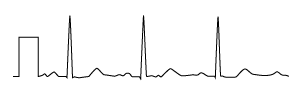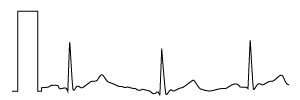Non-Invasive Ischemia Detector
ACME Non-invasive Ischemia Detector (ACME NID) is a reliable, non-invasive tool for ischemia detection algorithm. It is a patented algorithm that analyzes 10 second 12 lead ECG captured by either our own QED 2000 or a certified off-the-shelf ECG machine, and it aims to assist in detection of myocardial ischemia related to Coronary Artery Disease (CAD).
The ACME NID revolutionizes the field of non-invasive coronary artery disease diagnosis in several ways:
-
Reduced door-to-balloon time to speed up treatment. The ACME NID is a quick and highly sensitive ischemia detection tool. It can be used in the ER to screen chest complaint patient. In the past, it would take 90 minutes to get results. Now, in just a minute, the doctor can get an analytical report and make a prompt decision for treatment.
-
The ACME NID prevents unnecessary nuclear or invasive procedures in patients. Using the ACME NID, you have the same levels of sensitivity, specificity, and accuracy as those from radioactive procedures.
-
Using the ACME NID significantly reduces health care system costs. Accurate diagnosis by the ACME NID saves both time and cost of other test tools.
-
No additional workload. The ACME NID testing operation is the same as the conventional 12 lead resting ECG test. However, conventional methods cannot test for the probability of ischemia. Our QED 2000 with NID can do this and therefore, produces two results.
Overview
The ACME NID is a high-resolution ECG acquisition hardware, employing a sampling rate of 1000Hz. It uses frequency domain processing to predict ischemia. This process can be broken down into two steps. The first step is Time-frequency operation, which extracts 12 lead ECG signals from J point to T peak and takes the ST segment. The second step uses a logistic regression method to determine the risk of ischemia in the area.
Time-Frequency Processing
Step 1: Identify the characteristic points in each beat.

Step 2: For each beat, isolate the R-peak (or J-point) to T-peak segment. "Stretch" (resample) the segment to a fixed length. Finally, take the average of the fixed length (resampled) RT (or JT) segments. In this study, the discrete length is 512.

Step 3: Take the time-frequency transform of the averaged RT/JT segment to generate spectral harmonics h0, h1, h2, ..., h511.

Step 4: Pattern Classification.
| 2.5s of lead V6 (time domain) | JTp segment at V6 (time domain) | DCT OF JTp segment at V6 (frequency domain) | |
|---|---|---|---|
| MPI-0 |  |
 |
 |
| MPI-1 |  |
 |
 |
 |
 |
 |
|
 |
 |
 |
Overview
-
Accurate and reliable: Two clinical trials have shown that our patented NIA techonology provides both higher sensitivity and specificity than conventional resting ECG machines and exercise ECG machines.
-
Easy to use: he NIA analyzes data that is acquired by an 10 second resting ECG exam. This method allows for the NIA to be suitable for all candidates, including elderly or handicapped patients that cannot reach the target pulse of an stress ECG exam.
-
Cost-effective: Accurate diagnosis with NIA saves time and costs of other further, expensive tests such as MPI.
-
Revolutionary Approach: NIA is just a revolutionary technology. Its patented algorithm solves long-standing problems in ECG spectral analysis.